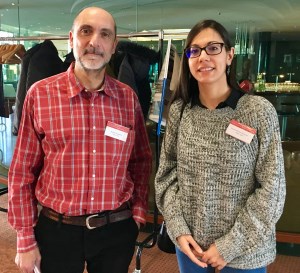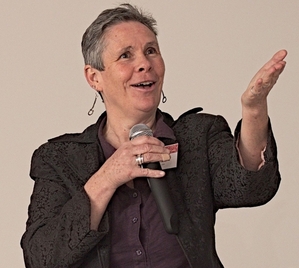Sandra Muñoz Braceras
Biomedical Research Institute Alberto Sols, Madrid
VPS13A and autophagy, possible connections and preclinical studies
 The NA Advocacy grant has allowed me to continue the project I started during my PhD. We have successfully finished the experiments that demonstrate the requirement of VPS13A for an efficient lysosomal function. We are glad to inform you that the results of these experiments are included in a manuscript that is now under review. We are performing some minor experiments suggested by the reviewers and we hope that the manuscript will be published soon so everyone can read our progress in detail.
The NA Advocacy grant has allowed me to continue the project I started during my PhD. We have successfully finished the experiments that demonstrate the requirement of VPS13A for an efficient lysosomal function. We are glad to inform you that the results of these experiments are included in a manuscript that is now under review. We are performing some minor experiments suggested by the reviewers and we hope that the manuscript will be published soon so everyone can read our progress in detail.
Lysosomal activity is essential for autophagic degradation and therefore, the defective lysosomal functioning could be the cause of the impaired autophagy that we had previously reported in VPS13A downregulated cells. We also show in this manuscript that the defective lysosomal function due to the loss of VPS13A can affect other intracellular pathways such as endocytosis. In addition, we have studied VPS13A interacting partners and the protein’s subcellular localization in order to explore the mechanistic details of the lysosomal deficiency. I believe that these findings will make a significant advance in the knowledge of VPS13A function and the pathways that may be affected in the disease.
Ruth Walker
Mount Sinai School of Medicine, New York
"Huntington's disease-like disorders in Latin America and the Caribbean" published in Parkinsonism and Related Disorders
 Abstract: Diseases with a choreic phenotype can be due to a variety of genetic etiologies. As testing for Huntington's disease (HD) becomes more available in previously resource-limited regions, it is becoming apparent that there are patients in these areas with other rare genetic conditions which cause an HD-like phenotype. Documentation of the presence of these conditions is important in order to provide appropriate diagnostic and clinical care for these populations.
Abstract: Diseases with a choreic phenotype can be due to a variety of genetic etiologies. As testing for Huntington's disease (HD) becomes more available in previously resource-limited regions, it is becoming apparent that there are patients in these areas with other rare genetic conditions which cause an HD-like phenotype. Documentation of the presence of these conditions is important in order to provide appropriate diagnostic and clinical care for these populations.
Information for this article was gathered in two ways; the literature was surveyed for publications reporting a variety of genetic choreic disorders, and movement disorders specialists from countries in Latin America and the Caribbean were contacted regarding their experiences with chorea of genetic etiology. Here we discuss the availability of molecular diagnostics for HD and for other choreic disorders, along with a summary of the published reports of affected subjects, and authors' personal experiences from the regions.
While rare, patients affected by non-HD genetic choreas are evidently present in Latin America and the Caribbean. HD-like 2 is particularly prevalent in countries where the population has African ancestry. The incidence of other conditions is likely determined by other variations in ethnic background and settlement patterns. As genetic resources and awareness of these disorders improve, more patients are likely to be identified, and have the potential to benefit from education, support, and ultimately molecular therapies.
See the full text of the article here.